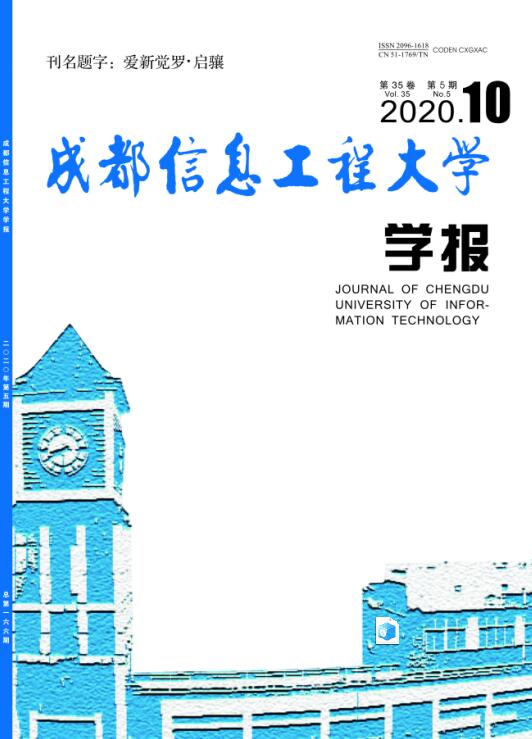FAN Sirui,WANG Weijia,WANG Bowei,et al.Analysis of Artificial Snow Enhancement Experiment of Large UAV on the East Side of Tibet Plateau in February 2022[J].Journal of Chengdu University of Information Technology,2025,40(02):220-225.[doi:10.16836/j.cnki.jcuit.2025.02.013]
2022年2月青藏高原东侧大型无人机人工增雪试验分析
- Title:
- Analysis of Artificial Snow Enhancement Experiment of Large UAV on the East Side of Tibet Plateau in February 2022
- 文章编号:
- 2096-1618(2025)02-0220-06
- Keywords:
- Tibet Plateau; UAV; artificial snow enhancement; MODIS
- 分类号:
- P481
- 文献标志码:
- A
- 摘要:
- 为验证大型无人机在高原地区进行人工影响天气作业和飞行观测的可行性,也为研究高原地区的云降水特征和人工增雪作业效果,2022年四川省人工影响天气办公室联合中航(成都)无人机系统股份有限公司在青藏高原东侧(川西高原)开展多个架次人工增雪试验,并利用卫星资料和常规气象观测资料对2022年2月11-12日在青藏高原东侧开展的2架次人工增雪试验进行分析。结果表明:2022年2月青藏高原东侧人工增雪试验目标云的云底温度低于-10 ℃,云底粒子半径较大,云底粒子有效半径为31 μm,云顶粒子有效半径为15~20 μm。无降水云和降水云的云顶均发生冰晶化,在云顶存在冰晶粒子递减带,无降水云的冰晶化高度低于降水云,无降水云的冰化高度为-22 ℃,降水云的冰化高度为-29 ℃。
- Abstract:
- In 2022, Weather Modification Office of Sichuan Province and AVIC(Chengdu)UAS Co., Ltd. carried out several flights of artificial snow enhancement experiments on the eastern side of the Tibet Plateau, which has verified the feasibility of large-scale UAVs for artificial weather modification operation and flight observation on the Tibet Plateau, and has also provided a new effective way to study the characteristics of cloud precipitation and the effect of artificial snow enhancement on the Tibet Plateau. In this paper, two artificial snow enhancement experimental flights carried out on the eastern side of the Tibet Plateau on February 11-12, 2022 were analyzed. Based on satellite data and routine meteorological observation data,the experimental flights were analyzed. The results show as following: On the eastern side of the Tibetan Plateau in February 2022, the temperature of the cloud bottom of the target clouds of the artificial snow enhancement experiment is lower than -10 ℃. The radius of cloud bottom particles is large, the effective radius of cloud bottom particles is 31 μm, and the effective radius of cloud top particles are 15-20 μm.Ice crystallization has occurred in the cloud tops of both non-precipitating and precipitating clouds. In the tops there are decreasing bands of ice crystal particles. The height of ice crystallization in non-precipitating clouds is lower than in precipitating clouds. The icing altitude is -22 ℃ for non-precipitating clouds and -29 ℃ for precipitating clouds.
参考文献/References:
[1] 徐祥德,赵天良,Lu Chungu,等.青藏高原大气水分循环特征[J].气象学报,2014,72(6):1079-1095.
[2] 徐祥德,董李丽,赵阳,等.青藏高原“亚洲水塔”效应和大气水分循环特征[J].科学通报,2019,64(27):2830-2841.
[3] 叶红,易桂花,张廷斌,等.2000-2019年青藏高原积雪时空变化[J].资源科学,2020,42(12):2434-2450.
[4] LI Y,XU R,YANG K,et al.Contribution of Tibetan Plateau ecosystems to local and remote precipitation through moisture recycling[J].Global Change Biology,2023,29(3):702-718.
[5] 保云涛,游庆龙,谢欣汝.青藏高原积雪时空变化特征及异常成因[J].高原气象,2018,37(4):899-910.
[6] 黄晓东,马英,李雨馨, 等.1980-2020年青藏高原积雪时空变化特征[J].冰川冻土, 2023,45(2):1-12.
[7] 沈鎏澄,吴涛,游庆龙,等.青藏高原中东部积雪深度时空变化特征及其成因分析[J].冰川冻土,2019,41(5):1150-1161.
[8] 邵洋,刘伟,孟旭,等.人工影响天气作业装备研发和应用进展.干旱气象,2014,32(4):649-658.
[9] 马舒庆,郑国光,汪改,等.一种人工影响天气微型无人驾驶飞机及初步试验[J].地球科学进展,2006,21(5):545-550.
[10] 马学谦,孙安平,张小军,等.适应高原天气与地形的人工增雨无人机研制及试验[J].农业工程学报,2017,33(15):105-111.
[11] 乔禛,魏加华,赵杰,等.黄河源区冬季冷云催化降雪过程的物理特征研究[J].应用基础与工程科学学报,2022,30(5):1121-1137.
[12] 程鹏,罗汉,甘泽文,等.大型无人机一次人工增雨试飞及催化响应分析[J].气象,2022,48(8):1053-1061.
[13] Rosenfeld D,Lensk I M.Spaceborne sensed insights into precipitation formation processes in continental and maritime cloud[J].Bullet in of the American Meteorological Society,1998,79(11):2457-2476.
[14] Lensky I M,Rosenfeld D.The time-space exchangeability of satellite retrieved relations between cloud top temperature and particle effective radius[J].Atmospheric Chemistry and Physics,2006,6(10):2887-2894.
[15] Freud E,Rosenfeld D,Andreae M O,et al.Robust relations between CCN and the vertical evlution of cloud drop size distribution in deep convective clouds[J].Atmospheric Chemistry and Physics,2008,8(6):1661-1675.
[16] 刘贵华,余兴,贾玲,等.2009年陕西春季层状云增雨卫星观测分析[J].干旱区研究,2011,28(4):699-704.
[17] 傅云飞,李宏图,自勇.TRMM卫星探测青藏高原谷地的降水云结构个例分析[J].高原气象,2007,26(1):98-106.
[18] 傅云飞,潘晓,刘国胜,等.基于云亮温和降水回波顶高度分类的夏季青藏高原降水研究[J].大气科学,2016,40(1):102-120.
[19] 戴进,余兴,刘贵华,等.青藏高原雷暴弱降水云微物理特征的卫星反演分析[J].高原气象,2011,30(2):288-298.
[20] 岳治国,余兴,刘贵华,等.NPP/VIIRS卫星反演青藏高原夏季对流云微物理特征[J].气象学报,2018,76(6):968-982.
[21] 刘贵华,余兴,戴进.不同积云云微物理特征的卫星反演分析[J].南京信息工程大学学报,2009,32(1):101-107.
[22] 刘贵华,余兴,戴进,等.地形云人工增雨条件卫星探测反演个例分析[J].气象学报,2011,69(2):363-369.
[23] 刘贵华,余兴,岳治国,等.卫星遥感人工增雨作业条件Ⅱ:层状云[J].气候与环境研究, 2012,17(6):758-766.
[24] 范思睿,王维佳.利用FY-4A卫星反演产品对飞机增雨作业的分析[J].高原山地气象研究,2018,38(4):60-66.
[25] 蔡淼,欧建军,周毓荃,等.2014.L 波段探空判别云区方法的研究[J].大气科学,38(2):213-222.
[26] Yuan T L,Li Z Q.General Macro-and Microphysical Properties of Deep Convective Clouds as Observed by MODIS[J].Journal of Climate,2010,23(13):3457-3473.
[27] 徐小红,余兴,朱延年,等.一次强飑线云结构特征的卫星反演分析[J].高原气象,2012,31(1):258-268.
相似文献/References:
[1]薛志航,邓 创,孙 一.青藏高原上空臭氧时空分布特征[J].成都信息工程大学学报,2018,(04):464.[doi:10.16836/j.cnki.jcuit.2018.04.017]
XUE Zhi-hang,DENG Chuang,SUN Yi.Temporal and Spatial Distribution Characteristics ofOzone over the Tibetan Plateau[J].Journal of Chengdu University of Information Technology,2018,(02):464.[doi:10.16836/j.cnki.jcuit.2018.04.017]
[2]吴 钩,白爱娟.青藏高原季风环流情况与中亚季风降水特征分析[J].成都信息工程大学学报,2016,(01):76.
WU Gou,BAI Ai-juan.Analysis on the Characteristics of Tibetan Plateau's
Monsoon Circulation and Central Asia's Rainfall[J].Journal of Chengdu University of Information Technology,2016,(02):76.
[3]梁嘉颖,陈权亮.青藏高原多种对流层顶的时空分布特征对比分析[J].成都信息工程大学学报,2020,35(01):69.[doi:10.16836/j.cnki.jcuit.2020.01.010]
LIANG Jiaying,CHEN Quanliang.Analysis of Temporal and Spatial Distribution Characteristics of Multiple Tropopauses over the Tibetan Plateau[J].Journal of Chengdu University of Information Technology,2020,35(02):69.[doi:10.16836/j.cnki.jcuit.2020.01.010]
[4]周 咏,万 垚.基于无人机的监控系统设计[J].成都信息工程大学学报,2021,36(02):159.[doi:10.16836/j.cnki.jcuit.2021.02.006]
ZHOU Yong,WAN Yao.Design of Surveillance System based on UAV[J].Journal of Chengdu University of Information Technology,2021,36(02):159.[doi:10.16836/j.cnki.jcuit.2021.02.006]
[5]骆开怡,陈权亮.青藏高原上空平流层水汽的时空演变特征[J].成都信息工程大学学报,2022,37(04):422.[doi:10.16836/j.cnki.jcuit.2022.04.010]
LUO Kaiyi,CHEN Quanliang.Temporal and Spatial Evolution Characteristics of Stratospheric Water Vapor over the Tibetan Plateau[J].Journal of Chengdu University of Information Technology,2022,37(02):422.[doi:10.16836/j.cnki.jcuit.2022.04.010]
[6]曾 剑,张 强,张 宇,等.青藏高原高寒草甸的空气动力学粗糙度特征[J].成都信息工程大学学报,2022,37(04):429.[doi:10.16836/j.cnki.jcuit.2022.04.011]
ZENG Jian,ZHANG Qiang,ZHANG Yu,et al.The Characteristics of Aerodynamic Aoughness Length of Alpine Meadows on the Qinghai-Tibet Plateau[J].Journal of Chengdu University of Information Technology,2022,37(02):429.[doi:10.16836/j.cnki.jcuit.2022.04.011]
[7]江金昊,刘海磊,王乙竹,等.基于Himawari-8卫星数据的青藏高原大气可降水量反演算法研究[J].成都信息工程大学学报,2022,37(05):494.[doi:10.16836/j.cnki.jcuit.2022.05.002]
JIANG Jinhao,LIU Hailei,WANG Yizhu,et al.Precipitable Water Vapor Retrieval Using Himawari-8 Satellite Observations over Tibetan Plateau[J].Journal of Chengdu University of Information Technology,2022,37(02):494.[doi:10.16836/j.cnki.jcuit.2022.05.002]
[8]凌荣巧,卢会国,蒋娟萍,等.基于气象无人机观测的测风优化研究[J].成都信息工程大学学报,2023,38(03):271.[doi:10.16836/j.cnki.jcuit.2023.03.004]
LING Rongqiao,LU Huiguo,JIANG Juanping,et al.Optimization Study of Wind Measurement based on Meteorological Drone Observation[J].Journal of Chengdu University of Information Technology,2023,38(02):271.[doi:10.16836/j.cnki.jcuit.2023.03.004]
[9]王 会,王永前,李剑锋,等.基于无人机多光谱数据的三峡库区支流叶绿素a浓度估算——以小江为例[J].成都信息工程大学学报,2024,39(02):233.[doi:10.16836/j.cnki.jcuit.2024.02.015]
WANG Hui,WANG Yongqian,LI Jianfeng,et al.Estimation of Chlorophyll a Concentration in Three Gorges Reservoir Branch based on UAV Multispectral Data——A Case Study of Xiaojiang River[J].Journal of Chengdu University of Information Technology,2024,39(02):233.[doi:10.16836/j.cnki.jcuit.2024.02.015]
[10]孙 昕,巩远发,郭丽芳,等.基于高分辨率再分析资料的青藏高原夏季风研究[J].成都信息工程大学学报,2025,40(05):633.[doi:10.16836/j.cnki.jcuit.2025.05.010]
SUN Xin,GONG Yuanfa,GUO Lifang,et al.A Study on the Summer Monsoon over the Tibetan Plateau based on High Resolution Reanalysis Data[J].Journal of Chengdu University of Information Technology,2025,40(02):633.[doi:10.16836/j.cnki.jcuit.2025.05.010]
备注/Memo
收稿日期:2024-08-13
基金项目:四川省科技计划资助项目(2019YJ0621); 中国气象局创新发展专项资助项目(CXFZ2024J035)
通信作者:王维佳.E-mail:wjwang1998@163.com
